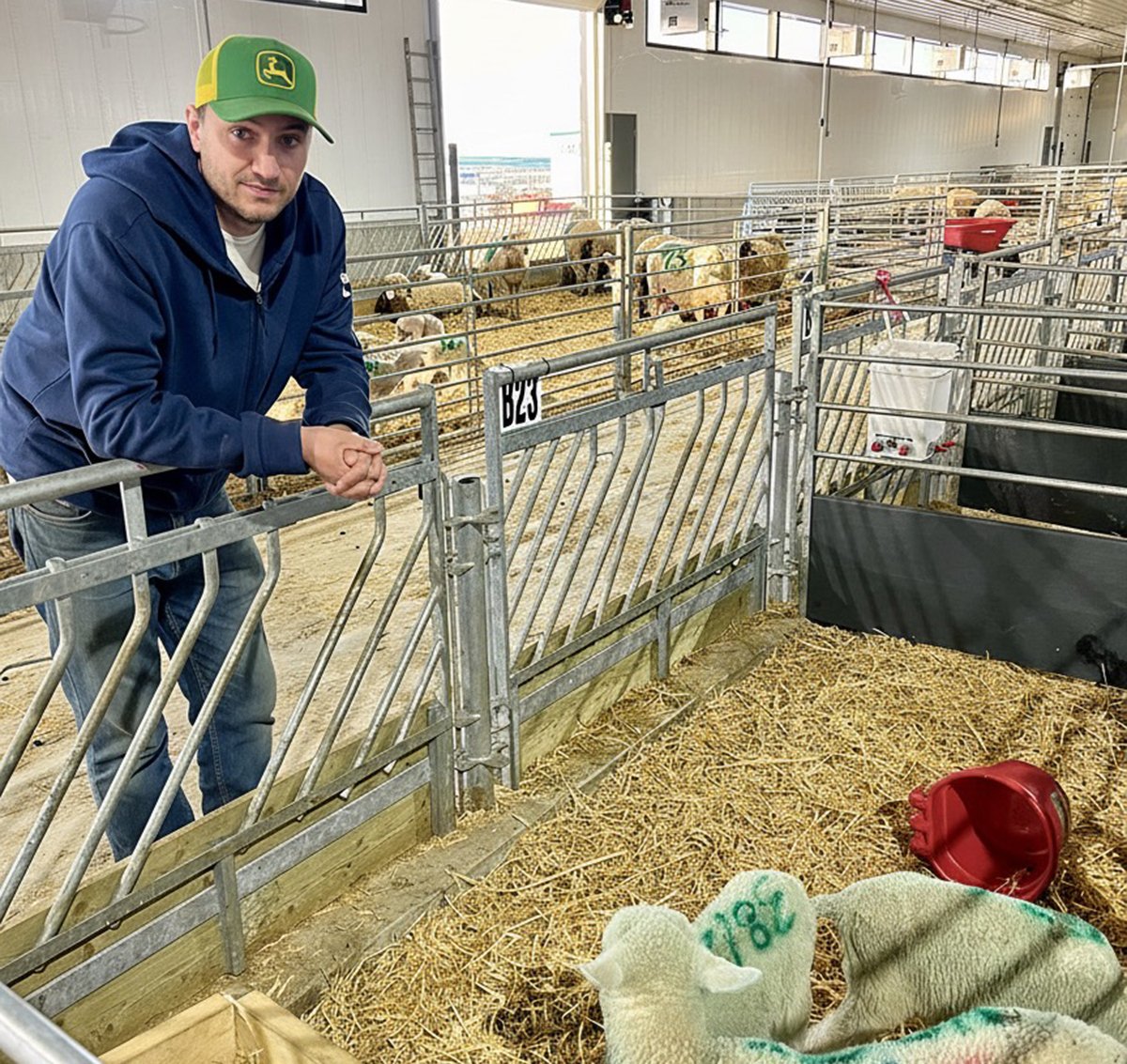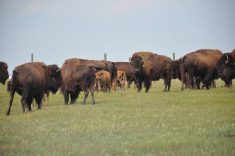Any good purebred producer will tell you that cattle need lots of condition to win at shows.
It goes against producers’ better judgment, but they definitely feed show cattle differently than the rest of the cattle population.
We all know that the ideal body condition for calving and rebreeding is 2.5 to 3.5 on a five point system, while show cattle typically are in the four or more range.
It is too bad that we consistently take these cattle with superior genetics and overfit them because it definitely hurts their reproduction and longevity.
Read Also

Solar, sheep provide valuable farm diversification
Eric Steeves says raising sheep on forages grown under solar panels provided economic stability and perhaps even saved his family’s fifth generation southern Alberta grain farm.
Although better-conditioned cattle appear to look better, all cattle judges are experienced enough to know when it goes overboard. Most judges are experienced stockmen who know all the negative attributes associated with too much fat or from overfeeding over a short time.
A show steer going to market, where carcass characteristics such as marbling and back fat are paramount, is different from a show heifer where future breeding and milking ability is key to a productive life.
The female’s condition is critical at breeding. The adage is that in order to breed, females must be on a rising plane of nutrition.
If cattle are fat already, they must get fatter to conceive.
Dieting, if necessary, needs to happen long before the breeding season so it doesn’t affect breeding. Many female show class winners don’t make it back the next year or breed late because of this situation.
Females with extreme growth can prompt concerns over higher than normal male hormones. While this enhances growth, being a little too masculine may affect fertility.
A freemartin heifer takes this to the extreme. It can look like the most growthy heifer in the pen because of the circulating male hormones. If implanting these freemartins, it is more advantageous to use steer implants. Also, some implants are approved for use once early in a heifer’s life and will not effect fertility.
I don’t recommend implanting replacement heifers. The extra 25 pounds gained t at weaning will have no bearing the following year.
The overfit female deposits fat in numerous locations externally and internally. Fat in and around the pelvis decreases the pelvic opening and makes calving harder. Fat around the developing udder becomes deposited in the mammary tissue and future milk production is greatly reduced.
There are also problems with laminitis or related foot problems. Cattle that walk more are fitter and leaner and keep their feet and legs in better condition.
A heifer that is not too fat is more likely to cycle, breed, conceive, deliver a calf and produce enough milk to raise that calf and rebreed the following year.
During calving, the fat in an overfat heifer’s pelvis can ball up ahead of the calf in the birth canal and burst out through the wall of the vagina. This is called prolapse of perivaginal fat and often must be attended to by a veterinarian. If not, this mass of fat becomes infected and causes straining and rebreeding issues.
Young bulls are the other side of the equation.
Show bulls must be almost overfit to do well in the show ring, but this hurts them later reproductively.
Too much fat in the scrotum interferes with temperature regulation. The extra insulation keeps the internal temperature too high, which in turn damages the sperm, resulting in defective or dead sperm.
Bulls need to be able to move and breed, an athletic feat. Fatter bulls do not move well over pasture when looking for cows in heat.
The extra nonmuscle weight makes them unathletic and prone to injury and breakdowns in their feet and legs. The back feet and legs are especially critical and need to be functional for successful breeding. It takes out-of-shape bulls several weeks of weight loss to reach the desired fitness so that they don’t tire after one or two breedings and look for the nearest shade tree.
The breeding season is short and intense so producers can ill afford to have freeloading bulls. On large pastures they must cover lots of acreage seeking cows in heat.
During the off season it is best to house bulls in large pens where they can get lots of exercise to keep them in shape.
As with cows, they are better on a rising plane of nutrition just before breeding season. With today’s high grain prices, bulls winter well on forage and producers may substitute a little grain just before the breeding season. Make sure to have them semen evaluated immediately before the breeding season.
Semen quality is poorer in fat bulls, and I believe they also have higher incidences of testicular degeneration.
We need cattle fit but not overfit to maintain good reproductive performance.














